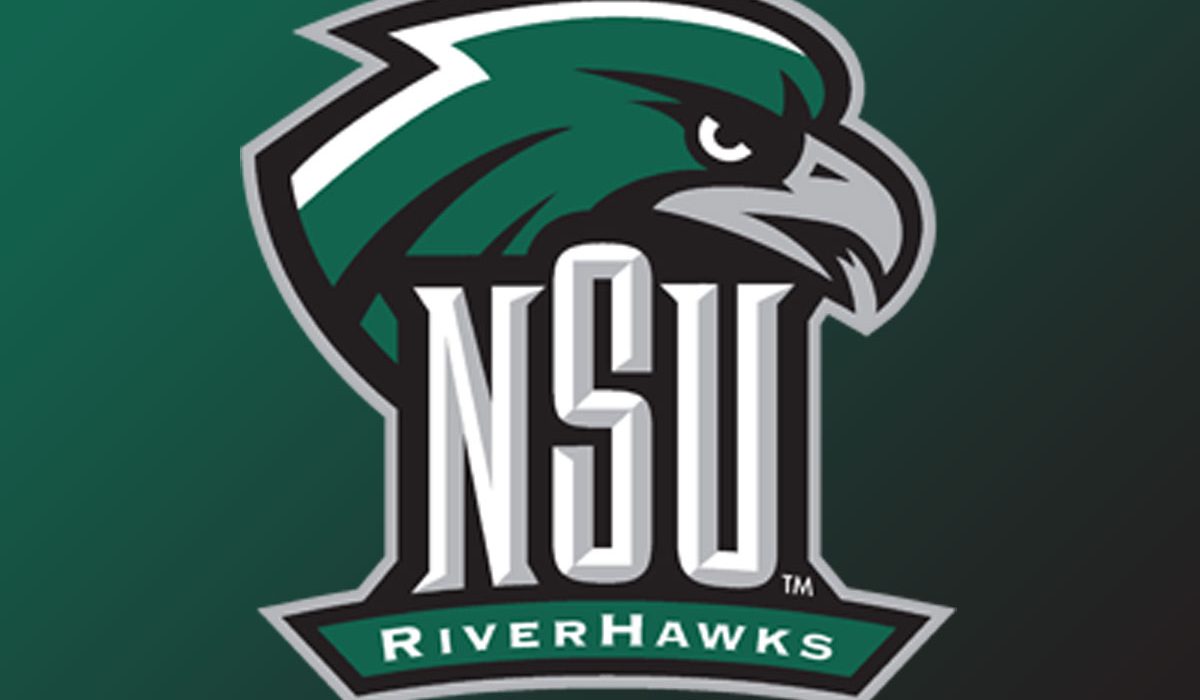It’s out there.
Northeastern State released a statement on Monday announcing a public forum on conference alignment to be held on April 11 and 12 ‘to provide information, and solicit feedback and opinions from students, faculty, staff and alumni, well as members of the local community.’
There is nothing in the release that would say explicitly that the RiverHawks are looking to leave their most recent conference home in the Mid-America Intercollegiate Athletics Association.
However, to give an opportunity for public feedback about the current state of athletics within a league is to give any sports fan that has lived through the last decade of conference realignment a reason to think change may once again be in the air.
Among the topics up for discussion are: budgets, facilities, fit, rivalries, scholarships, and travel.
It is likely that wins and losses will find a way into that discussion as well.
Tony Duckworth, Chief Athletics Officer at NSU, said in the release simply that it is time to look over things.
“President Turner and I agreed to conduct a comprehensive evaluation of NSU’s athletics conference affiliation following five years of membership in the MIAA,” Duckworth said. “Given we are in the final stages of that agreement, we welcome Green and White Nation’s input as we conduct this study.”
So again, although there is no public statement about NSU’s departure from the MIAA, if these subjects are up for discussion at the point, and publicly, it would seem that options are available.
In NSU’s time in the MIAA, there have been high points.
The women’s golf team was the MIAA champion in 2016 and finished eighth in the NCAA Championship while Baylee Price was the individual MIAA champion, winning the title for the second time.
The women’s tennis team is ranked 20th in the country, currently on an eight-match wining streak and has won 36 straight matches in the MIAA. The team has won the last three regular season titles and has been the runner-up in four consecutive MIAA postseason tournaments.
But Northeastern State has struggled in some of the high-profile sports during the five years in the MIAA. The football team has gone 11-43, the men’s basketball team is 55-83 and the women’s basketball team is 56-83.
And those sports will draw more attention, and also bring in more revenue.
Be reminded again that there has not yet been a statement that NSU is leaving the MIAA. Has that point been made enough yet?
But if the RiverHawks were to look outside the current conference boundaries, where would they look?
Given the matters of priority that were listed, there seem to be just a few options. Here are some pros and cons for each, with conferences listed in alphabetical order:
GREAT AMERICAN CONFERENCE
PROS: Northeastern State is right in the middle of the GAC footprint, so travel would be easier on the budget. The longest GAC trip would be to Monticello, Ark., at 301 miles. Four schools in the MIAA cause the NSU bus to log more miles, including the trip to Kearney, Neb., coming in at 532 miles from Tahlequah.
There are already built-in rivalries that been around for more than a century in some cases with the Oklahoma schools that are already in the GAC. And the similarity of the schools themselves would have to be a factor. It would seem to be a natural fit.
CONS: Unless the RiverHawks find a partner with which to enter the league, it would bring the GAC membership total to 13. An odd number. And one that could make for scheduling problems. This would mean 12 regular season football games or 11 without playing the entire league. And a conference schedule for basketball that could be 24 games, or for softball 48 games. It might also mean breaking the conference into divisions, which is something the GAC likely would not want.
And even if there is a partner, now that membership number is 14, which magnifies the previous scheduling issues.
HEARTLAND CONFERENCE
PROS: Again, the RiverHawks would be within an already established conference footprint, and not come in as an outlier. Rogers State in Claremore is only an hour away and Arkansas-Fort Smith means less than an hour and a half on the bus. The enrollment at NSU is more than 8,000, which would make it (by enrollment) the largest school in the conference
CONS: No football. That alone would make RiverHawks fans cringe. The fan base in Tahlequah is hungry for more wins and to do that, there have to be games. This would seem to be something that would shut down any talks almost immediately.
Travel-wise, there is nothing in the MIAA that compares to the 700-mile trek to Laredo, Texas, to take on Texas A&M-International. And 500-plus-mile trips to Lubbock (Lubbock Christian) and San Antonio (St. Mary’s) won’t be easy on the travel budget.
LONE STAR CONFERENCE
PROS: …
CONS: Seriously, there really wouldn’t be any pros for NSU to going back to the conference it just left. The LSC has been rebuilding itself since the great exodus of 2011 when NSU (along with UCO, ECU, SOSU and SWOSU) left. But the reasons those schools left are still on the table. Going back would not be wise.
Oh, and travel issues – can you say Silver City, N.M.? That’s nearly 1,000 miles one way from Tahlequah.
Yeah. No.
With all that in mind, it seems reasonable to think there are Great American thoughts on the minds of those in the Green and White Nation. Or not.
Nothing to this point has been stated officially that a move is in the works.
But it’s out there.


